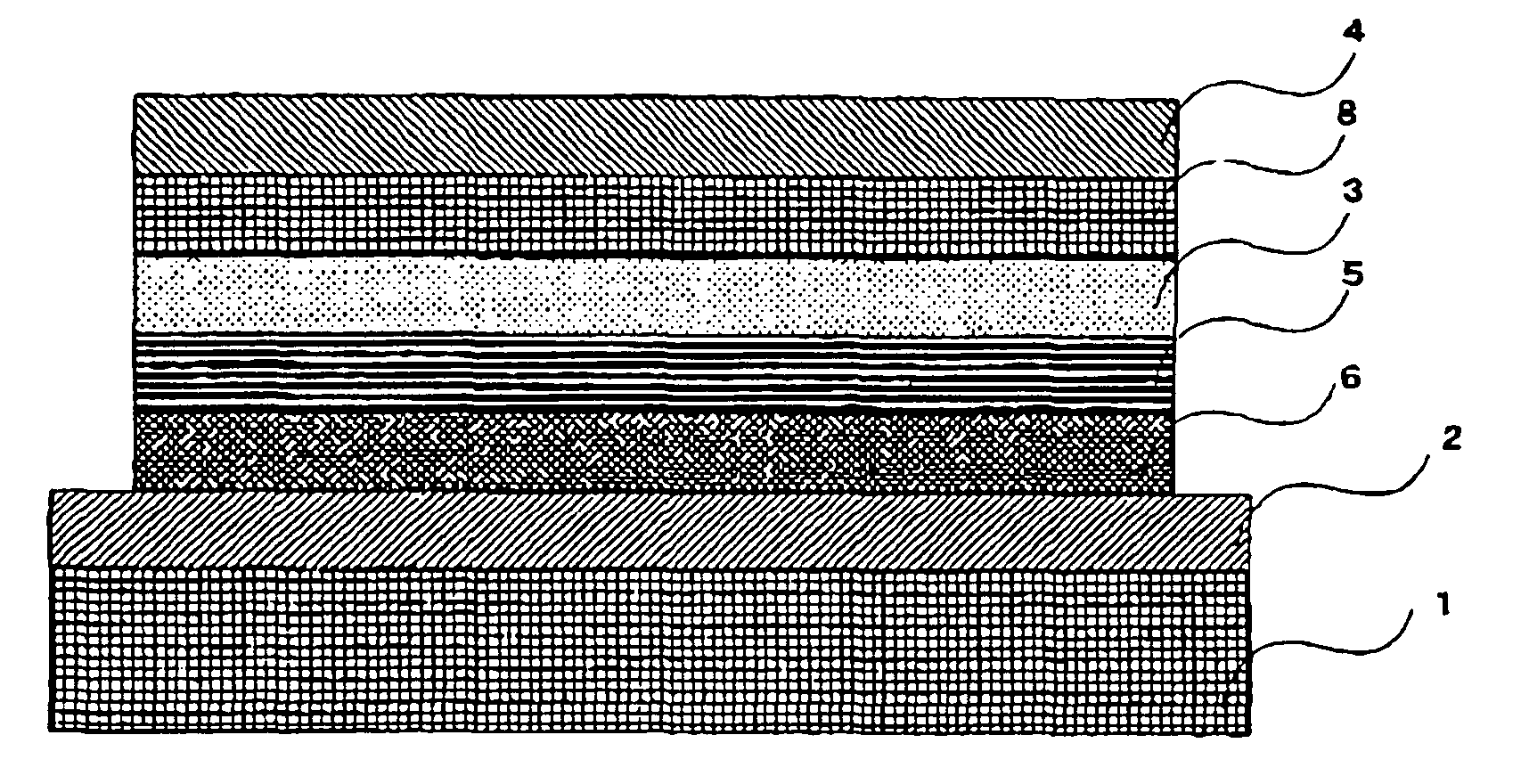Method for producing an organic electroluminescence display element
a technology of electroluminescence and display elements, which is applied in the manufacture of electric discharge tubes/lamps, lighting and heating apparatuses, and tube/lamp factory adjustment, etc., and can solve the problem of insufficient effect of improving the luminance lifetime of emission
- Summary
- Abstract
- Description
- Claims
- Application Information
AI Technical Summary
Benefits of technology
Problems solved by technology
Method used
Image
Examples
case 1
[Case 1]
[0096]On a glass substrate, ITO was vapor-deposited in a thickness of 200 nm to form an anode 2 having a sheet resistance of 7Ω / □. On this anode 2, NPD represented by the formula (II) was vapor-deposited by a vacuum vapor deposition method to form a hole transport layer 5 having a film thickness of 60 nm. Then, on the hole transport layer, Alq of the formula (III) and coumarin 545T of the following formula (IV) were co-vapor-deposited by means of separate boats to form a light emitting layer 3 in a film thickness of 60 nm.
[0097]
[0098]The concentration of the coumarin 545T in the light emitting layer 3 was 1.0 mol %. On the light emitting layer, a layer of LiF having a thickness of 0.5 nm as an interface layer 8 and an aluminum layer having a thickness of 200 nm as a cathode 4 were vapor-deposited sequentially to prepare an organic EL display element as shown in FIG. 5. The vacuum degree at that time was 0.00107 Pa.
[0099]As aging to the organic EL display element, driving was...
case 2
[Case 2]
[0102]Operations up to the measurement of the emission luminance lifetime were carried out in the same manner as Case 1 except that aging after the formation of the films in Case 1 was not carried out. The change of the luminance per current density showed a monotonous reduction.
case 3
[Case 3]
[0103]Operations up to the measurement of the emission luminance lifetime were carried out in the same manner as Case 1 except that as the aging in Case 1, driving was carried out for 40 hours (at a frequency of 50 Hz) by repeating alternately the application of continuous 10 ms of a forward bias voltage of 12V and the application of continuous 10 ms without the application of bias voltage.
[0104]By the aging, the luminance per current density was 93% of the initial value. Subsequently, the change of the luminance per current density showed a monotonous reduction.
PUM
| Property | Measurement | Unit |
|---|---|---|
| Temperature | aaaaa | aaaaa |
| Temperature | aaaaa | aaaaa |
| Fraction | aaaaa | aaaaa |
Abstract
Description
Claims
Application Information
 Login to View More
Login to View More - R&D
- Intellectual Property
- Life Sciences
- Materials
- Tech Scout
- Unparalleled Data Quality
- Higher Quality Content
- 60% Fewer Hallucinations
Browse by: Latest US Patents, China's latest patents, Technical Efficacy Thesaurus, Application Domain, Technology Topic, Popular Technical Reports.
© 2025 PatSnap. All rights reserved.Legal|Privacy policy|Modern Slavery Act Transparency Statement|Sitemap|About US| Contact US: help@patsnap.com



